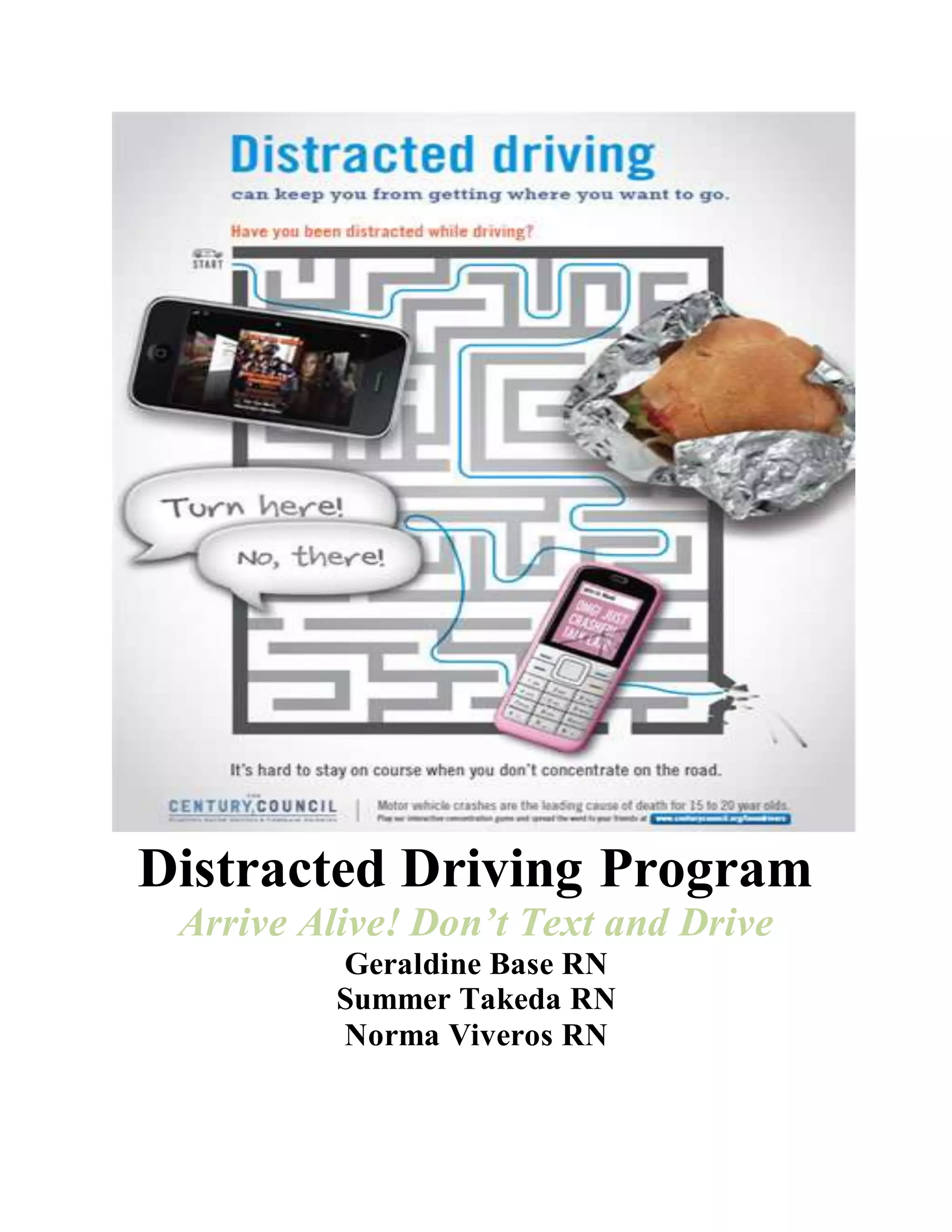This document outlines a distracted driving program aimed at 18-20 year olds. It begins by defining distracted driving and identifying it as a leading cause of crashes among young drivers. Specific contributing factors are identified, including cell phone use, passengers, and lack of experience. The program goals are to reduce distracted driving-related crashes through educational campaigns targeting students and increasing awareness of risks. A strategy team is proposed made up of program coordinators, university representatives, and community leaders to implement interventions like posters, screen savers, and speakers. A SWOT analysis evaluates strengths, weaknesses, opportunities and threats in addressing this important issue.



































